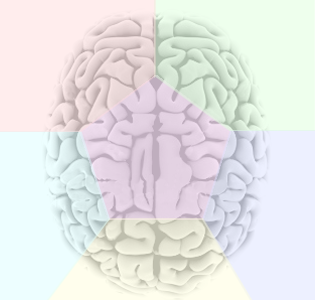Prevention Strategies for A Healthy Brain
All of us have heard the term, “An ounce of prevention is worth a pound of cure.” But nowhere is that more true and important than in the area of brain health. There are a lot of controversies in the research on neurological disorders, but one thing all researchers and physicians agree on is the importance of early intervention in preventing the costly devastations of dementia.
It is estimated that Alzheimer’s disease usually starts nearly 10 years before individuals begin to notice serious memory lapses or disruptions in their activities of daily living. And up until recently it was believed that, in order for interventions to be effective in preventing dementia a person needed to initiate them in midlife. Because, the brain is very adaptable, and by the time Alzheimer’s becomes apparent (which for many people is now in their early 50’s or even late 40’s), so much damage has already occurred that stopping it’s progress was believed to be impossible. Moreover, there are currently no good medications proven to prevent Alzheimer’s or related disorders. Therefore, there was virtually no hope for recovery, once serious symptoms were diagnosed.
Fortunately with the advent of powerful nutraceuticals or food supplements like Perceptiv, Memoryze and cognitex (which are basically food concentrates not drugs or medication) and other interventions we will discussed on this site, there is new hope even for those diagnosed with Alzheimer’s disease in the early stages. HOWEVER, reader beware, lest you let complacency overtake you, the consensus is still clear, the longer a person waits before taking action, and making the necessary changes, the greater the likelihood they will get caught in the relentless and irreversible clutches of neurodegeneration or Alzheimer’s disease, from which the only escape is death. Because, even though we now have some things which will delay and apparently even arrest AD in the early stages nothing yet has been found to stop it once it passes mid stage.
Therefore, what I want to review with you now are the 5 protective factors identified on the adjacent brain, and discussed on this site, which have been shown to impact brain health and possibly prevent the devastations of dementia.
Mental Stimulation
The first area identified in the upper left quadrant of the brain map is “Mental Stimulation.” In a major review of research conducted in Spain a few years ago it was identified that mental stimulation, or continued learning, was one of the most important factors in brain health and longevity.1 This was the major finding of famous Nun Study, which astounded brain researchers, who found that by constantly “learning new things” some of these sisters were able to overcome even apparent brain disease, and actually enable their brains to rewire around the damage.2 New interactive programs like Pathways and computer based brain training programs like Mindfit, have further demonstrated the dynamic value of mental stimulation in maintaining brain fitness. However, there are many free and more accessible activities that can help as well. For more information and references simply click on this quadrant.
Diet and Nutrition
By clicking on the next quadrant to the right you can learn more about the vital importance of diet and nutrition in brain health. Many researchers now believe this to be a primary factor in the development of neurological diseases like Alzheimer’s, and vascular dementia. Epidemiological studies have shown that in other countries where their diet is much different than ours, here in the West, they have much lower incidents of AD, depression and other related dementias. And this cannot be accounted for by genetics, because once their family members move to the US or they begin adopting more of our Western diet into their lifestyle, their incidents of these maladies rises dramatically.3 Moreover, new nutritional formulas, like MemoryXL are now proving to be very helpful in the fight for better brain health. To learn more about a brain healthy diet and related supplements click on this quadrant.
Stress, Depression and Sleep
If you click on the lower left quadrant you will learn more about the impact of stress, depression and sleep on brain health. In short, we now know that prolonged stress or depression, especially without adequate sleep, and sunlight can increase cortisol, which over time, can result in damage, even death to the delicate cells of the hippocampus responsible for memory formation. Once this occurs a loss of the ability to form memories is inevitable, and very difficult to restore. Indeed there is no medication which can restore these cells. However, some nutrients and a combination of other activities may help. To learn more about these and other stress and depression management strategies click on this quadrant.
Social Interaction
In the bottom quadrant is “Social Interaction.” Because we know that mental stimulation is important for the brain, it’s no surprise that social interaction has been shown to be very helpful. Obviously you have to use your brain in order to interact socially with others. And there are other social factors, such as touch, with may play an important role sustaining brain health as well. To learn more about these click on this quadrant.
Physical Exercise
Then in the lower right we have “Physical Exercise.” This is perhaps the most empirically validated method for improving not only physical fitness, but brain fitness as well. One California study showed a near perfect correlation between physical fitness and brain fitness, and new research is showing that while midlife fitness is very important, seniors who persist in regular exercise can achieve significant benefits, including greater brain health and improved memory as well. To learn more about related research, what types of exercise seem most helpful, and the required duration click on this quadrant.
Integration
Finally, we have the pentagon in the middle of the brain map, which as you see, connects and suggests the importance of “Integrating” all of the other areas together for optimal functioning and improvement. Let me tell you why this is so essential, and why it must be at the heart of prevention. Generally in health related studies researchers focus on only one of these aspects of life, like exercise, or a single nutrient. However, recent evidence suggests the value of a broader view in protecting our brain. For example, most people are aware of the importance of exercise for good physical and mental health. But many do not realize that exercise also increases oxidative stress in the body, and if we are not careful to consume extra antioxidants, or the nutrients needed to produce these in our body, exercise alone may contribute to wrinkles and dementia.
Moreover, recent studies suggest that each of these vital elements of daily living, mental stimulation, eating right, stress management, social interaction, physical exercise, relaxation and recreation make an added contribution to mental health. Indeed they work synergistically together as force multipliers. Click on this quadrant to learn more about the various underlying causes of neurodegeneration and the importance of this integrated approach for prevention.
The will to live this lifestyle comes from the realization, that all of these factors are necessary, that they work in concert in our lives, and that the best insurance for a healthy future is to maintain an ever vigilant attitude to address the various needs of the body and brain. To learn more about this important integrated approach I invite you now to click on each of these areas and further explore our site. I think your brain will thank you, and bless you with greater vitality and a better quality of life in your later years if you do so. And feel free to contact me if you have questions or contributions you’d like to make. This, like our brain, is a work in progress. Enjoy!
By David R. Larsen, MFHD
Prevention Strategies 








- FREE SPECIAL REPORT AND UPDATES
For free monthly updates on the latest practical research related to brain health and memory improvement, and a free 23 page report on How to Prevent or Arrest Alzheimer's, Click here. Recent Comments
Archives
- July 2019
- November 2018
- September 2018
- July 2018
- June 2018
- April 2018
- February 2018
- January 2018
- December 2017
- October 2017
- September 2017
- August 2017
- June 2017
- May 2017
- March 2017
- January 2017
- December 2016
- October 2016
- September 2016
- August 2016
- June 2016
- May 2016
- April 2016
- March 2016
- February 2016
- January 2016
- December 2015
- November 2015
- August 2015
- July 2015
- June 2015
- May 2015
- April 2015
- March 2015
- February 2015
- January 2015
- November 2014
- October 2014
- September 2014
- August 2014
- July 2014
- June 2014
- April 2014
- March 2014
- February 2014
- January 2014
- December 2013
- November 2013
- October 2013
- September 2013
- August 2013
- July 2013
- June 2013
- June 2012
- February 2012
- January 2012

